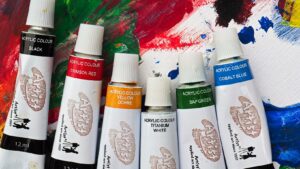In the vibrant intersection of psychology, aesthetics, creativity, and arts, there’s a thriving society that’s been driving conversations and pioneering research. This society is a global hub for artists, psychologists, and researchers alike, bringing together diverse perspectives to explore and understand the profound impact of art on the human psyche.
Delving into the realm of aesthetics, this society illuminates the intricate relationship between creativity and mental processes. It’s not just about appreciating art, it’s about understanding how art influences, inspires, and shapes our thoughts, emotions, and behaviors. Stay with us as we journey through the fascinating world of the Society for the Psychology of Aesthetics, Creativity, and Arts.

Society For The Psychology Of Aesthetics Creativity And The Arts
Delving into the Society for the Psychology of Aesthetics, Creativity, and the Arts (SPACA), grasp its role as a premier organization uniting artists, psychologists, researchers. All join forces to delve into the intriguing impacts of art on the human psyche. The society stands at the nexus of aesthetics and psychology, exploring the myriad of manners in which art can shape, provoke, and foster emotions and behaviors.
Goals and Mission
The heart of SPACA’s efforts lies in its mission to promote an understanding and appreciation of aesthetics, creativity, and the arts. Not only does the society delve into the impacts of art on the human psyche, but it also fosters interdisciplinary exchanges among its members, facilitating valuable discussions on the interplay between creativity and mental processes. Through rigorous research, SPACA emphasizes the value of integrating art into psychological practice and theories. This insight can offer fresh perspectives and potentials for this unique intersection of fields.
Membership and Community
Opting for SPACA’s membership opens avenues for engagement with fellow enthusiasts and experts. Its community encompasses a diverse spectrum of individuals – from artists, researchers, to psychologists. Beyond the opportunity for connectivity, members also enjoy access to SPACA’s repository of research, publications like the ‘Psychology of Aesthetics, Creativity, and the Arts’ journal, conference opportunities, and more. Art, unequivocally, influences us in myriad ways and understanding this influence, it informs, leads to beneficial transformations, personal, and societal. And it’s this understanding that binds the SPACA community, fostering a spirit of mutual learning and collaboration.

Key Research Trends in Aesthetics, Creativity, and Arts
Research in the aesthetics, creativity, and arts continuum has continually shaped societal understanding. This interaction has driven advancements in both psychological practice and artistic expression. In this section, let’s delve into the influence of psychological research on art and discuss the role of creativity in psychological well-being.
Influence of Psychological Research on Art
Psychological research impacts art in profound ways. When psychologists investigate artistic expression, they unveil layers of human cognition, emotion, and behavior. For instance, studies by SPACA members have shown that color schemes used in paintings can reflect the artist’s emotional state. This insight enhances both the creator’s self-awareness and spectators’ understanding of the depicted emotions.
Another impact lies in understanding art appreciation. Psychology centers its investigations on the mechanisms underlying spectators’ art perception. This research trend aids in shaping public art policies, influencing gallery setups, and encouraging public art appreciation. Comprehension of psychological aesthetics also guides artwork presentation, enhancing its appeal and interaction with the audience.
The Role of Creativity in Psychological Well-being
Creativity plays a significant role in promoting psychological well-being. Its engagement serves as a therapeutic outlet and fosters resilience during life’s adversities. SPACA studies indicate that creative practices like painting, writing, or music composition can enhance individuals’ positive feelings, reduce stress, and improve overall mental health.
Creativity’s contribution to psychological well-being isn’t confined to personal expression. They extend to societal connections and community-building. Notably, collective community art projects encourage societal bonding, heighten empathetic understanding, and promote collectively shared identities.

Additionally, creativity can stimulate cognitive function and problem-solving skills. Irrespective of artistic proficiency levels, engaging in creative activity improves cognition and relates positively with psychological wellness.
The research trends in aesthetics, creativity, and arts establish their relevance to psychological study. By understanding the creative mind and its influences on art, deeper insights into human behavior and mental processes are uncovered. It furthermore reiterates the essential role that creative pursuits play in fostering psychological health and community well-being.

